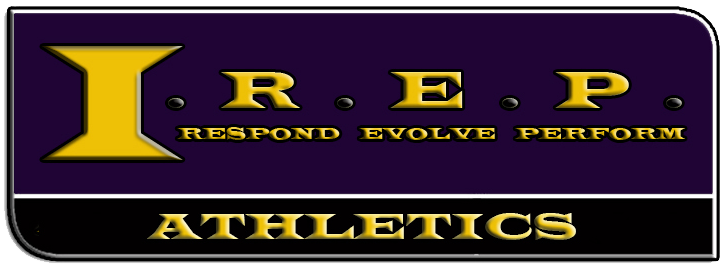When you work out, your muscles undergo stress because the activity causes microscopic tears in them. Without a proper cool-down, lactic acid will build up, leaving you with stiff and sore muscles. Cool-down exercises help to flush out the waste products, hence making tomorrow’s session easier.
Your heart is pumping rapidly, sending blood to the working muscles during working out. Suddenly stopping one’s activity might mean a rapid drop in blood pressure and subsequent wooziness or lightheadedness caused by pooling blood in the lower extremities. Gradually lowering your heart rate, giving it a break to return to its normal pace.
The cool-down is for your muscles and emotional well-being. Taking just a few minutes to ease out of your intense level lets you breathe, stretch, and center yourself.
Effective Cool Down Activities
Light Aerobic Activity
The first few minutes of cool-down should include some light aerobic activity. This has the effect of sending a message to the heart to refocus action from the working muscles, thereby reducing one’s respiratory rate, and gradually returning the body to a resting state.
After running or a high-impact cardio workout, take a few minutes of walking or light jogging. The moderate-pace walk should last at least 5 to 10 minutes, allowing the body to adjust from the rapid pace of the workout to a complete stop gradually.
In the case of cyclists, they should pedal at a low resistance and a slower rate. This helps maintain the blood flow in the muscles and ultimately prevents it from pooling and creating stiffness.
Swimmers should follow up high-paced laps with some slow laps at the end of a workout to allow for a harmonious transition from intense activity to a more relaxed pace.
 Stretching
Stretching
Do stretching routinely and maintain flexibility, which helps alleviate muscle rigidity in the long run. Focus on the most significant muscle groups you work on. Each stretch should take approximately 20 to 30 seconds without bouncing when you perform it.
Sit on the floor with one leg straight and bend the knee of the other leg. Reach as far as possible toward the toes of your leg, and then pause there.
Stand straight, flex one knee, and draw up your heel toward your buttock. Catch the ankle with one hand, ensuring the knee remains centered.
Step with both hands on a wall at shoulder level. Step one leg back, keeping it flat. Lean forward until you feel a gentle pull in the region of your calf.
Extend one arm as much as possible across your chest. Press up with the opposite arm. The focus of this particular stretch is on the shoulders and upper back.
Foam Rolling
Foam rolling is a practice that relieves muscle knots and improves circulation using the technique of self-myofascial release.
Put the foam roller under your calves, and with the help of your body weight, rock and roll back and forth.
Rest your body face down on the device in such a way that it covers the backside of your thighs. Proceed to roll your way from the hips downward to the knees.
Lie down on your side. With the roller under your hip, go slowly from the hip to the knee, along the outside portion of your leg.
Make a Ritual Out of It
To ensure you don’t skip the cool-down phase, set a dedicated timer for 10-15 minutes at the end of your workout. View this time as being as important as any other workout you do.
Just as you specify your main exercise routine, specify the cool-down part up front when you begin the workout. Decide ahead of time which stretches, light aerobic exercises, or foam-rolling exercises you’ll do, so there’s a clearer signal for your body to transition to that cool-down state after finishing the workout activity.
Use a fitness app or one of the smartwatches or devices that keep track of your exercise to remind you to cool down—some of the apps come with built-in timers and guided routines specifically for cool down activities.
Do your exercise with a friend or join a fitness class that has already committed to cooling down after the actual exercises. Making the rituals less private has a way of strengthening the motive to complete cool down activities, especially in this case when two persons are doing their cool down right after the core exercises.
It’s a good idea to keep a physical or digital fitness diary. Such monitoring can offer tangible evidence that helps to support the value of such practices in your life. You will note improvements in flexibility, reduced muscle pain, and performance enhancement.
 Incorporate Yoga into Your Workout to Wrap It Up Tight
Incorporate Yoga into Your Workout to Wrap It Up Tight
After making a sprint, incorporating yoga into your workout could be the ultimate way to put yourself back together. Yoga includes stretching, breathing, and meditative exercises that can cover these ends. You can incorporate the following movements, to wrap yourself up nice and tight in a practice session:
Sun Salutation. This yoga pose continuum may serve as a lovely segue into relaxation. It draws out the whole body and aids, effectively, in winding down.
Child’s Pose. Kneel and sit back toward your heels, extending your arms straight in front of you. It’s a relaxing pose where you stretch your back muscles and calm your morale.
Corpse Pose (Savasana). Lie flat on your back, extending your arms slightly out to the sides, palms exposed. Shut your eyes and inhale deeply. This movement will thus deeply comfort and relax your muscles and intellect.
Hydrate, Nourish, and Sleep
When you have finished doing your workout, hydrate and eat properly. Your muscles will recover faster if you supply them with all the essential nutrients they need.
Toxins are taken out when you water, helping to refill what was lost during your gym visit. Start by drinking a glass right after the session, ranging from 300 to 600 ml.
Eating something within the first 30 minutes after your cooldown helps your improvement. Opt for a nutritious snack such as a fruit yogurt or a fruit smoothie that contains some protein and carbohydrates.
Once you’ve cooled down, and refueled, the last step of your recovery is sleep. This is when all the magic associated with muscle repair and overall recovery occurs.
To make recovery business nicer for you, keep them in the same way and sleep and get up at the same times every day.
Make your bedroom an optimal place for sleep. It should be completely dark and cool, without the annoyance of noise and disturbances.
